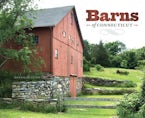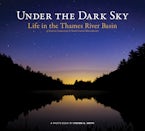- Home
- Garnet Books
- photography
- Barns of Connecticut

A testament to the beauty of the central structure of the Connecticut farm
Featuring more than 100 stunning full-color photographs along with helpful diagrams and historic photos, Barns of Connecticut captures both the iconic and the unique, including historic and noteworthy barns. The book discusses the importance of barns to Connecticut agriculture across our state and up to the present day. Markham Starr's Barns of Connecticut offers a lovely introduction to the architectural, functional, and agricultural roles these structures played in early Connecticut. Through text and color photographs, it tells a story of change and continuity. From the earliest colonial structures to the low steel buildings of modern dairy farms, barns have adapted to meet the needs of each generation; they've stored wheat, hay, and tobacco, and housed farm animals and dairy cows. These enduring structures display the optimism, ingenuity, hard work, and practicality of the people who tend land and livestock throughout the state.
Introduction
Barns of Connecticut
Acknowledgments
Barn Hunting in Connecticut
Further Reading
MARKHAM STARR is a photographer and the author of End of the Line: Closing the Last Sardine Cannery in America. His photographs have appeared in Yankee Magazine.
"In Starr's description of the architecture and his many color photographs, you feel the substance of the barns, and you can understand the reasons that have kept these often overlooked structures around all these years. As he says in his introduction, 'Walking into a barn is as close as I can get to walking into history'."
~Alan Bisbort, Republican-American
""[Starr's] book includes photographs of many types of barns, including dairy barns, tobacco barns, corncribs, farm equipment sheds and Victorian carriage houses. Most are privately owned and not open to the public, so no addresses are provided. But the historical information and architectural details about each barn are useful to anyone who wants to know more about Connecticut barns.""
~Valerie A. Russo, AAA Journeys Online
""In Starr's description of the architecture and his many color photographs, you feel the substance of the barns, and you can understand the reasons that have kept these often overlooked structures around all these years. As he says in his introduction, 'Walking into a barn is as close as I can get to walking into history'.""
~Alan Bisbort, Republican-American
""[Starr's] compelling and lovely photographs capture barns in all states of repair and disrepair, both working and derelict, from all over the state, and invite the reader to contemplation about how the world has changed since the first European settlers established themselves here in the 17th century.""
~Elizabeth Hannon Kading, Connecticut History Review
"With over a hundred captivating color photographs and an engaging narrative, this beautiful book documents the character and features of a remarkable collection of Connecticut's historic barns and farm buildings."
~Thomas Durant Visser, author of Porches of North America and Field Guide to New England Barns and Farm Buildings
"This fluid discussion of the evolution of the Connecticut barn is filled with enlightening generalization supported by telling details. The author's deep knowledge of and obvious respect for these endangered relics of our agricultural heritage is manifest in both text and photographs.""
~James F. O'Gorman, author of Connecticut Valley Vernacular: The Vanishing Landscape and Architecture of the New England Tobacco Fields

